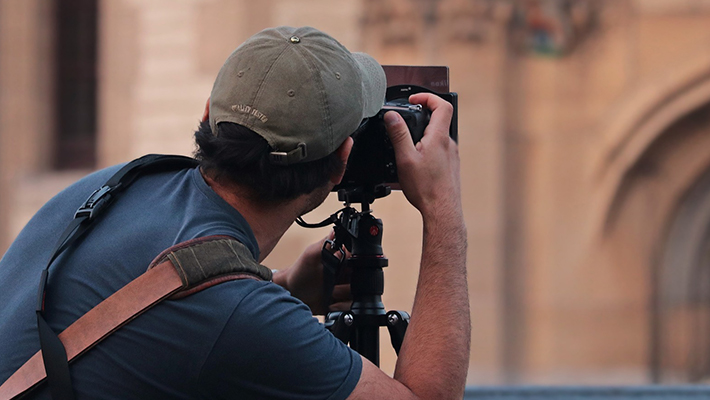Prevent opening a photography business that is destined to fail. Knowing how to properly open and conduct a photography business can lead to a solid second income or primary income if you build your business into a sustainable career.

bluecranedigital.com gathered the following essential information on starting a successful photography business.
Starting a Photography Business
There’s a significant difference between people who know how to take the perfect selfie and those who can fully capture the ideal moment and refer to themselves as a professional photographer. By now, you should know that there’s much more to the business than pointing your mobile device and applying a filter.
Like all professional endeavors, starting a photography business will require you to invest a significant amount of time and money to secure the appropriate equipment, properly register your business, and build an impressive portfolio.
Photography business startup costs are relatively lower than in other industries. Depending on your focus, needs, and current equipment, you can build a photography business as soon as today.
Step 1 – Create a Photography Business Plan
A business plan is critical to outlining your services, understanding your target market, and setting your rates.
Considering these details upfront will help you start and scale your business quickly and soundly.
Step 2 – Consider Startup Costs

Here is a basic budget idea for starting your photography business, not including studio or office space. All prices are annual estimates or one-time purchases.
- Professional Business cards: $100+
- Two cameras: $1,400 to $2,000 each
- Multiple lenses: $1,000+ each
- Two flashes: $500 to $700
- Multiple memory cards: $50 to $75 each
- An external backup drive: $120 to $150
- Computer with sufficient memory: $2,000
- Lightroom and Photoshop software subscription: $120
- Business licenses: $150 (varies by state)
- Insurance: $500 per year (varies by business type and location)
- Accounting and Taxes: $300+ per year (varies)
- Online proof gallery, like ShootProof: $120 per year
Optional Business Expenses:
- Business training and specialized professional classes
- Photography creative workshops and classes
- Personalized equipment bags and straps
- Printed marketing materials (swag)
- Official studio and office space
Step 3 – Find and Secure Startup Funds

If you have sufficient money saved in your bank account to start your business, you may not need to seek or borrow money, but the majority of entrepreneurs need assistance. Many people who are starting a business for the first time ask family or friends for help or will keep their day job until the business reaches self-sustainability.
You will need a business plan in place that specifies how you’ll spend the funds and when or how you intend to pay back your lenders.
Step 4 – Name Your Business
Dedicate some time to considering your business name. It will be your new clients’ first contact with your brand, and you want to make a good first impression. After deciding on a business name, search it on the Secretary of State’s website to ensure you have a unique and available name.
If your business will operate as a sole proprietorship, it is recommended to file a “Doing Business As” or DBA when registering your business. As a sole proprietorship, your business name will default to your legal name. If you want to operate under a different name (like one that highlights photography), you’ll need a DBA. DBA filing requirements can vary from state to state, so do your research.
Step 5 – Register Your Business
You’ll want to register your business—meaning you will legally establish your business. To do so, you should choose the right business entity for your business and choose a business name.
Choose a business entity
Many photography business owners tend to register as a sole proprietorship or a limited liability company (LLC). Each legal structure offers certain benefits.
The most popular advantage of sole proprietorships is that they’re free to form. But, a sole proprietorship won’t protect you against personal liability.
Many photography businesses form an LLC because you benefit from reduced liability and the choice to be taxed as a sole proprietorship or corporation.
The type of entity you choose will have a significant impact on your business, from taxes to liability and more. It is recommended to consult with a business attorney or tax professional if you’re uncertain of the right choice to make.
Step 6 – Licensing, Permits, and Insurance
Your business now legally exists, but to continue operating legally, your next step is to obtain the proper business licenses, permits, and insurance.
Business license and permits
Securing the right business license or permit is key to learning how to start and operate a photography business legally. Check with your local city hall and state licensing board to affirm that you are in compliance with the necessary regulations.
Business insurance
You may not consider it necessary for a photography business, but you should always look into and carry insurance. Insurance adds a secondary level of protection from costly liability disputes if you should encounter a disgruntled or dissatisfied customer. Research business insurance policies and select the most appropriate to shield you from professional and general liability.
Step 7 – Business Accounting and Banking
To start doing business, you’ll need a separate place for your money. That’s where EINs, bank accounts, and credit cards become fundamental.
Obtain an EIN
Even for a one-person photography business, you should apply for an employer identification number, or EIN, from the IRS.
Your EIN is the business equivalent of an individual’s social security number, and you will use it when filing your business taxes with the IRS. Your EIN is crucial when opening your business bank account and applying for a business loan in the future.
Open a business bank account
It is practical to separate your business and personal finances. Mixing your personal and business finances can void legal protections gained from forming an LLC. Even a sole proprietorship benefits from this division because it makes bookkeeping easier during tax season.
You can easily distinguish your business and personal finances by opening a business checking account. You can deposit cash or invoice payments from your photography jobs. And use these bank account funds for business-related expenses only.
Open a business credit card

A dedicated business credit card is another way to separate your business and personal expenses. You may be surprised to learn that you have a separate credit score for your business. By regularly using and paying off your business credit card, you can significantly increase your business’s financial health, helping you secure better business loans in the future.
Step 8 – Appropriately Pricing Your Services
When starting a photography business, pricing your services should include time, labor, as well as a fee for using your resources. Here are a few things to help you set your prices:
Choose your niche
The niche you choose will influence the value of your photography services. As an example, a professional wedding event photographer can charge $2,000 or more for their services. Where a family photographer may only charge $400 for a produced photoshoot. Keep in mind that as you grow your portfolio, you can raise your rates accordingly.
Check out your competition
Don’t raise your prices just to raise them. Once you find yourself working with your preferred clientele, you can maintain a price that works for you. Also, stay firm on what you charge.
Figure out how long each job takes
What may also affect your pricing is the duration of a photo shoot. Be mindful of your time beyond the photoshoot – processing, editing, uploading, and distributing your photos are time-consuming and labor-intensive. Factor this into your price point, so you’re not underpaid for your work.
Portrait sessions will generally last between one and two hours and produce somewhere in the range of 75 to 100 images, edited in black and white and color. Events can lead to hundreds of photos, depending on the event size and duration.
Step 9 – Invest in Your Website
Once you’ve established a name for your photography business, it’s time for a website. There are free website templates on several platforms, but your website is like your digital storefront. You want it to be attractive and impressive, so consider having your website professionally created.
Your website should showcase your work. Keep your site well-organized by dividing your galleries into categories. Include a picture of yourself and a page that describes your highlights, background, and experience.
Step 10 – Hop On Social Media

Social media is a great (and free) promotion tool, but it’s recommended to start out with one or two sites and use them consistently. Facebook may be a good option, but you might want to invest time in one of the more visual channels like Instagram.
Start a Successful Photography Business
In this article, you discovered how to start a successful photography business and tend to crucial details along the way.
By following a plan and knowing what to expect from the start, you increase your potential for making your creative outlet a lucrative business venture.
Ignoring the initial fundamental steps of opening a photography business can leave you vulnerable to severe legal and financial trouble.
Sources:
online.aurora.edu/starting-new-brand/
pdflife.one/download/4574326-how-to-start-photography-business
clients.ohiosbdc.ohio.gov/DocumentMaster.aspx?doc=2758
